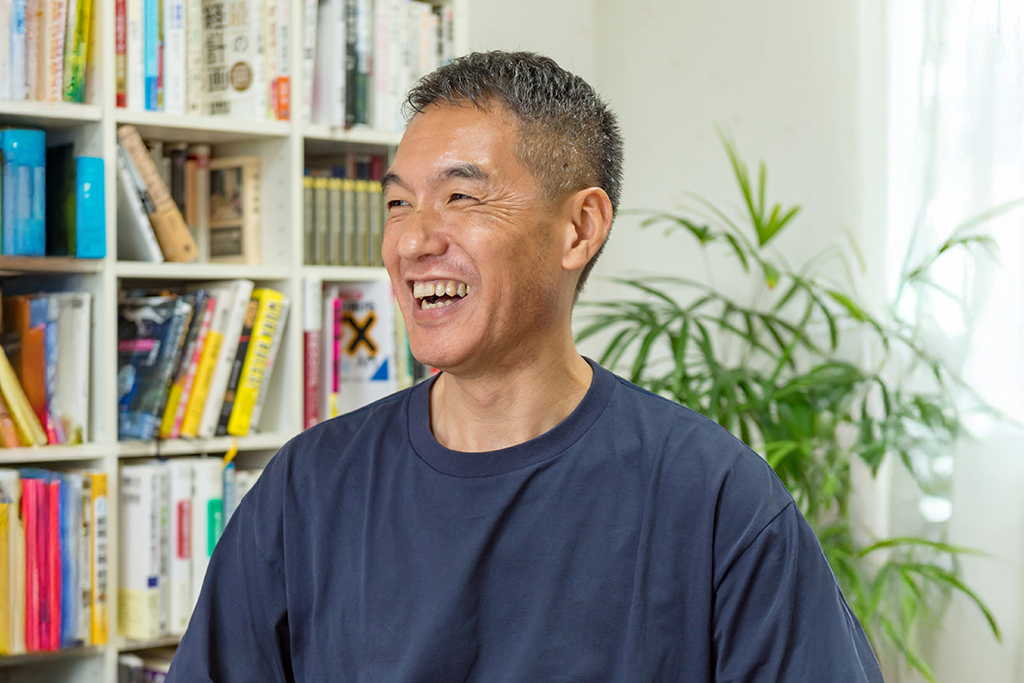Note: This website was automatically translated, so some terms or nuances may not be completely accurate.
Hiroshima to the world. The peace-themed area branding project "HiHiroshima".

Shinji Muto
Dentsu Inc.

Kazuma Yoshida
Dentsu West Japan Inc.

Chihiro Toda
Tabimachi Gate Hiroshima Co., Ltd.
The Future Map of Regional Economies is a series introducing unique business models leveraging area characteristics and activities contributing to regional economic revitalization. This installment focuses on the Hiroshima-born item brand "Hi,Hiroshima." It is a project launched as a joint venture between Tabimachi Gate Hiroshima Co., Ltd., which operates travel and regional trading company businesses in Hiroshima Prefecture, and " Shiodome Salon, " a business creative team within Dentsu Japan (domestic Dentsu Group) that supports new business development.
We interviewed Chihiro Toda, Chief of the Sales Management Team in the Regional Trading Company Division at Tabimachi Gate Hiroshima; Kazuma Yoshida, Head of the CXCD1 Department at the Growth Planning Center, DentsuWest JapanInc.; and Shinji Muto, Creative Director at Dentsu zero. We discussed the project's origins, future prospects, and their aspirations for peace.
Through upcycled products, a portion of sales is returned to the community
Q. "Hi,Hiroshima" is a Hiroshima-based item brand born from the collaboration between Tabimachi Gate Hiroshima and "Shiodome Salon." First, could you tell us about Tabimachi Gate Hiroshima's business activities?

Q. What led to the launch of the "Hi Hiroshima" project?
We want to spread peace to the world through our items.
Q. Please tell us about the concept behind "Hi,Hiroshima".
Q. Mr. Yoshida is responsible for the copywork surrounding the brand. Could you share the thoughts behind the brand name and copy?

Design and Item Development Highlighting "Hiroshima's Unique Character "
Q. What kinds of items does "Hi, Hiroshima" currently offer?

Q. Could you tell us about the design concept and any special touches?
Q. Since starting sales, have there been any memorable episodes?
Communicating the product's story to become a brand that takes flight worldwide
Q. How do you envision expanding "Hi,Hiroshima" going forward?

Not just in Hiroshima, local residents often struggle to recognize their own region's appeal. That's why, as Dentsu Inc.'s Muto explains, the first step is to introduce "Hi, Hiroshima" to tourists, and from there, increase brand awareness among local residents. The key to this lies in compelling copy that conveys the brand's message and eye-catching design. Moving forward, we will continue to leverage dentsu Japan's Creativity to drive regional revitalization.
Was this article helpful?
Newsletter registration is here
We select and publish important news every day
For inquiries about this article
Author

Shinji Muto
Dentsu Inc.
SCC
Creative Director / Planner
Joined Dentsu Inc. in 1992. After three and a half years in sales at the Shizuoka branch, transferred to the Planning Department at Tokyo headquarters. Since then, work has spanned beyond advertising planning and production to encompass overall communication design, product and new business planning, and creative direction for content. Currently affiliated with CDC. Has also been active in educational institutions, including as a visiting researcher at Keio University's SFC Research Institute and as a lecturer at universities and elementary schools. In publishing, has been involved in planning for books such as Kiyoshi Shigematsu's "Dreams: Continuing the Pitch!" (Asahi Shimbun Publications), Hiroshi Shimizu's "Beyond the 'Solo Victory' Civilization" (Mishima Publishing), and Papaya Suzuki's "Kazufumi-kun" (Asahi Shimbun Publications), and also produces children's picture books. His authored books include <a href="http://www.dentsu.co.jp/knowledge/publish/concerned_creative/atama.html" target="_blank">"Improving Your Brain's Constitution"</a> (Nikkei Publishing) and <a href="http://www.dentsu.co.jp/knowledge/publish/concerned_social/ojii_obaa.html" target="_blank">"Grandpa and Grandma's Okinawan Rock 'n' Roll"</a> (Poplar Publishing).

Kazuma Yoshida
Dentsu West Japan Inc.
GPC
Creative Director / Copywriter
Born in Hiroshima Prefecture. After working at Recruit Media Communications, joined Dentsu West Japan Inc. While handling communications for various companies, media outlets, and professional sports teams in his hometown of Hiroshima, he was involved in new business and product development for passionate companies in the West Japan region.

Chihiro Toda
Tabimachi Gate Hiroshima Co., Ltd.
Regional Trading Company Division
Chief
Returning to my hometown from the Kanto region, I sought a career involving local community engagement. In May 2021, I joined as store manager for the launch of "BANCART," a shop curating regional products opened on the 1st floor of the Hirogin HD headquarters building. My previous role was in the apparel industry, primarily focused on store operations. Currently, I oversee merchandising and visual merchandising for both BANCART and the Hiroshima Peace Memorial Park Rest House. My responsibilities include developing products using local ingredients and expanding sales channels. I also focus on planning and executing events to generate community engagement.


